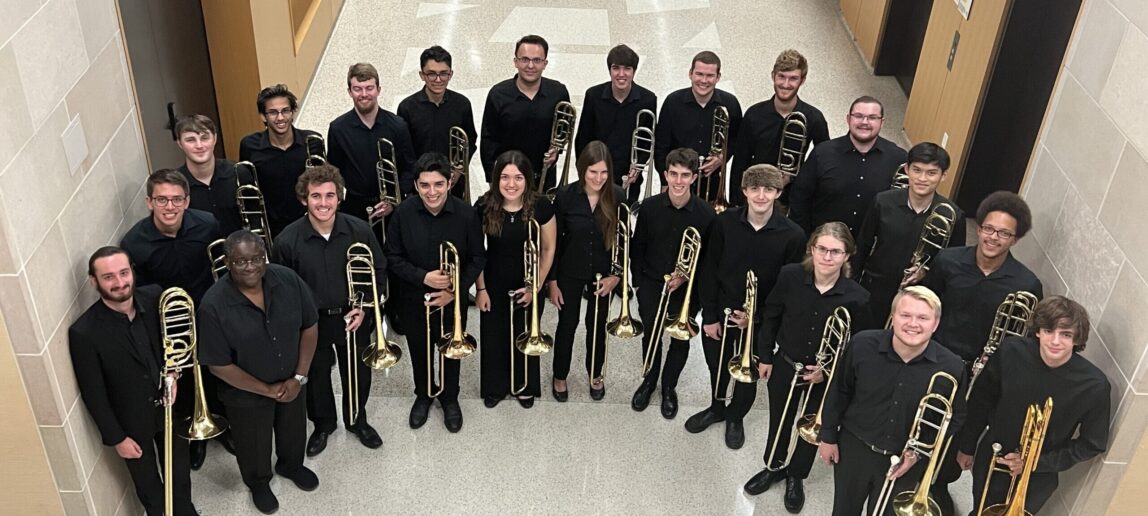Trombone Choir presents fall concert Nov. 15
The Texas A&M University Trombone Choir will perform its annual fall concert Nov. 15 at 7:30 p.m. at Our Saviour’s Lutheran Church, 1001 Woodcreek Drive in College Station.
David Wilborn, associate professor of music in Texas A&M’s College of Performance, Visualization & Fine Arts, said it will be the choir’s first indoor concert since COVID restrictions were in place.
“Many people in the community will be very excited to hear the choir resume live indoor performances,” he said. “Historically, we have wonderful fans in the community who regularly attend our concerts. We are looking forward to reconnecting with our friends and supporters.”
Wilborn created the Trombone Choir in 2014. The students involved are not music majors, he said, but are dedicated to the group and rehearse weekly.
“I am so fortunate to work with some of the most talented trombone players at Texas A&M,” he said. “We have students who come from some of the best high school bands in Texas and who are former all-state musicians.”
The Texas A&M Small Ensembles will also perform, and the song lineup features works by John Lennon and Paul McCartney, Lin-Manuel Miranda, Katharine Parker and Michael Terry.
The event includes a premiere work by Jesse Hendrix, a composer who graduated from Texas A&M and then earned his graduate degree from Stephen F. Austin State University. The Trombone Choir planned to debut “Hymn Without Words” at a previous concert, but events were delayed by COVID, Wilborn said. The performance will include a solo by choir member Milada Zatkalik.
“I am so excited that we are finally able to get his beautiful work on our fall semester concert,” Wilborn said.
Wilborn’s own “Tsunami” will also be a part of the concert. The University of North Carolina and the Carolina Trombone Project Consortium commissioned the piece, which Wilborn describes as capturing “the scene of a coastline that is threatened by the force of a destructive tsunami wave.”
“In the middle of the music, there is a scene where island tourists are dancing and partying to entertaining Polynesian music,” he said. “They are totally unaware that a tsunami is coming. The final passage of the music sets the scene of the massive wave racing to the coastline. The music projects the energy and hysteria of the event, which also includes the sound of a blaring tsunami siren. The music ends with a tsunami wave crash but leaves the audience wondering if another massive wave is on the way.”

